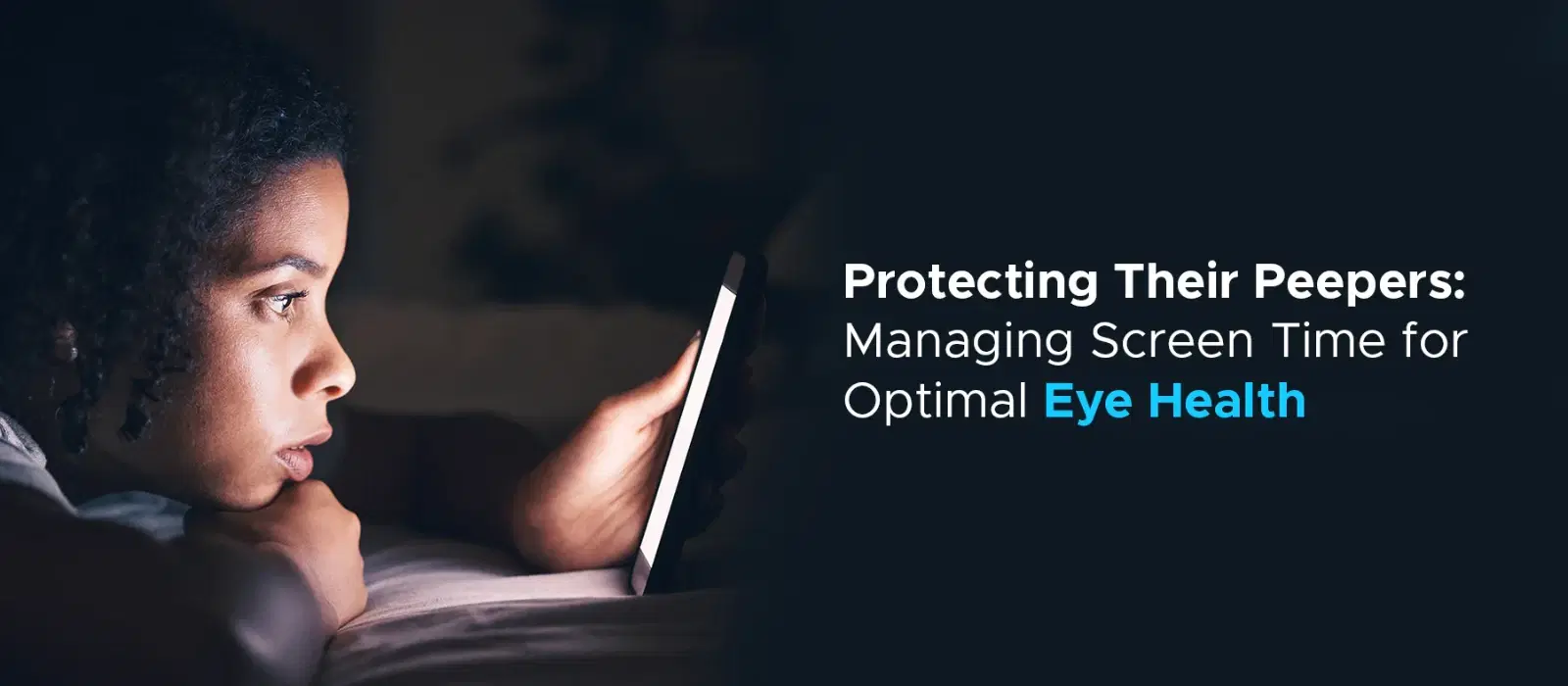
Consumer Electronics
•05 min read
In today's digital age, screens have become an integral part of our daily lives. From smartphones and laptops to tablets and TVs, our reliance on these devices is ever-increasing. However, this has raised concerns about the impact of screen time on eye health. Understanding how much screen time is good for eyes is crucial for maintaining optimal vision health. Tata Neu and Croma are dedicated to enhancing customer experiences by offering advanced technology and expert guidance to help you manage your screen time effectively.
Screen time refers to the amount of time spent using devices with screens, such as smartphones, laptops, tablets, and TVs. With the rise of digital media, our exposure to screens has significantly increased. While these devices offer convenience and connectivity, excessive screen time can negatively affect our vision and overall eye health.
Research indicates that the average adult spends more than 7 hours a day on digital devices. This prolonged exposure can lead to various eye-related issues, making it essential to understand how to balance screen time effectively.
Prolonged screen use can lead to digital eye strain, also known as Computer Vision Syndrome. Symptoms of eye strain from screens include headaches, dry eyes, and blurred vision. Over time, excessive screen time can contribute to long-term eye health issues such as myopia (nearsightedness) and disrupted sleep patterns due to blue light exposure.
Studies have shown that children who spend more time on screens are at a higher risk of developing myopia. This is particularly concerning as myopia can progress rapidly during childhood and adolescence, leading to more severe vision problems in adulthood.
Determining the optimal screen time for eye health involves setting healthy limits. For adults, it is recommended to limit continuous screen time to 2 hours, followed by short breaks. For children, age-specific guidelines should be followed to ensure their developing eyes are protected. One effective method is the 20-20-20 rule: every 20 minutes, look at something 20 feet away for 20 seconds. This simple practice can significantly reduce eye strain.
In addition to the 20-20-20 rule, incorporating regular outdoor activities can help mitigate the effects of screen time. Natural light exposure has been shown to reduce the risk of myopia in children and improve overall eye health.
There are several ways to reduce eye strain from screens. Adjusting screen settings, such as brightness, contrast, and enabling blue light filters, can make a significant difference. An ergonomic setup, including proper screen distance, lighting, and posture, is also essential. Additionally, regular eye exercises and consciously blinking more often can help alleviate discomfort.
Using devices like Croma's range of eye-friendly gadgets, which include blue light blocking screens and ergonomic accessories, can further help in reducing eye strain. These products are designed to provide comfort and protection, making your screen time healthier.
Different devices require specific screen time recommendations. For smartphones and tablets, limiting usage and enabling night mode can reduce eye strain. When using laptops and desktops, consider using anti-glare screens and taking frequent breaks. For TVs and gaming consoles, maintaining a safe viewing distance and limiting binge-watching sessions are crucial for eye health.
It's also beneficial to create a screen-free zone in your home, particularly in bedrooms, to ensure better sleep quality and reduce overall screen exposure.
Preventing digital eye strain involves regular eye check-ups and using protective eyewear, such as blue light blocking glasses. Incorporating eye-friendly habits into daily routines, like taking breaks and adjusting screen settings, can help maintain eye health. Tata Neu and Croma offer a range of eye-friendly gadgets and accessories to support your vision health.
Did You Know? Regular breaks and proper screen settings can significantly reduce eye strain and improve overall eye health.
It is recommended to limit continuous screen time to 2 hours for adults, followed by short breaks. For children, age-specific guidelines should be followed.
Symptoms of digital eye strain in children include frequent eye rubbing, complaints of headaches, and difficulty focusing on the screen.
Yes, blue light filters can help reduce eye strain by minimizing blue light exposure, which can disrupt sleep patterns and cause discomfort.
Excessive screen time, especially before bedtime, can disrupt sleep patterns due to blue light exposure, leading to poor sleep quality.
Simple exercises such as the 20-20-20 rule, blinking more often, and focusing on distant objects can help relieve eye strain.
Ensure your screen is at eye level, maintain a comfortable distance from the screen, and use an adjustable chair to support good posture. Adjusting the lighting in your workspace to reduce glare can also help.
Prolonged screen time, especially without breaks, can increase the risk of developing myopia in children. Encouraging outdoor activities and limiting screen time can help mitigate this risk.
In conclusion, managing screen time is essential for maintaining eye health. By following healthy screen time limits, adjusting screen settings, and incorporating eye-friendly habits, you can protect your vision. Explore Tata Neu and Croma's range of eye-friendly gadgets and accessories to enhance your digital experience while safeguarding your eye health. Visit Tata Neu for expert advice and take advantage of exclusive offers, rewards, and after-sales support.